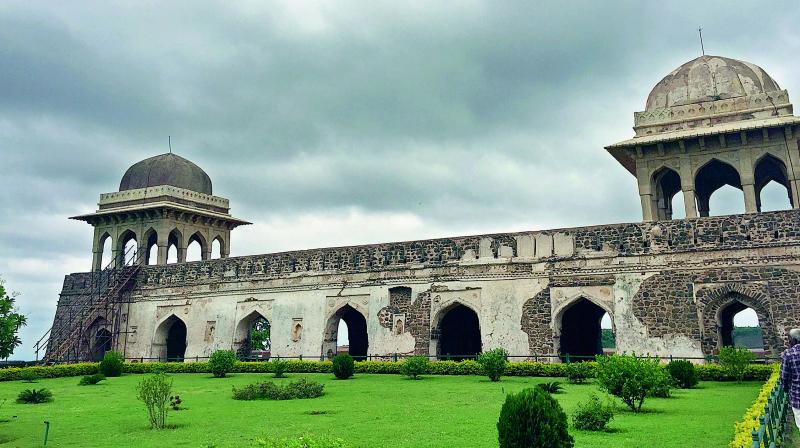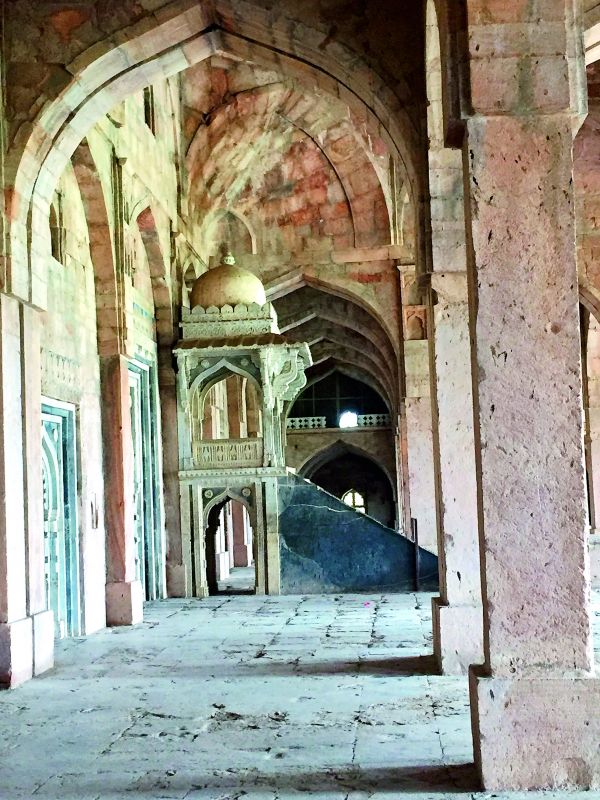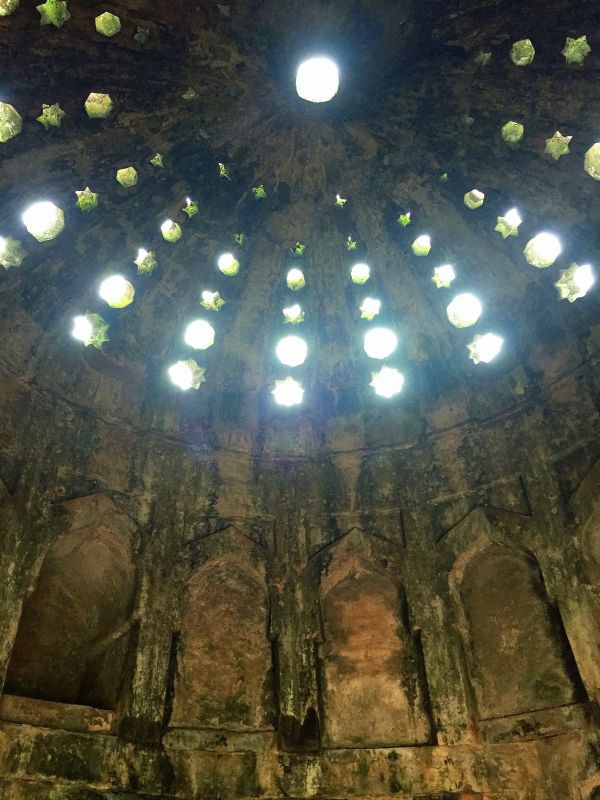Mesmerising Mandu

Mandu in Madhya Pradesh is a jewel that lies hidden most of the year, only to shine and glitter during the monsoon season. There are many roads that lead to Mandu which lie tucked away off the highway that runs from Aurangabad to Indore. All of them go through winding streets that run through villages where driving is not easy. We have, however, taken the route we had been warned to avoid. The villages have now given way to a steep upward path that obviously leads to the palace or tower walls that we glimpsed at some turning. By the time we hit level ground of the plateau, that houses the fortified town, an hour has passed although we have driven less than twenty kilometres off the main road!
 The throne in the audience hall in the mosque
The throne in the audience hall in the mosque
“This place once housed a hundred thousand people; today there are hardly 5000 residents,” our guide tells us. He is a small-made man, and propels us from one monument to another with relentless alacrity. The monuments tell the history of this ancient site that boasts of Jain, Hindu and Muslim architectural marvels that still fascinate with their intricate beauty. Successive rulers of different dynasties have left behind their mark, creating a delightful architectural mix of palaces and monuments. We buy our tickets for Rs 15 each and trot obediently behind our guide into the the Jami Masjid. The structure is indeed imposing, and our guide shows us details that we would otherwise have missed. Carved kalashs and mango leaves on marble pillars stand as testimony to a structure that was probably built by a Hindu king, but taken over to house a mosque. Regardless of its provenance, the hall is mind-blowing in the perfect geometry of the supporting pillars; in the beautifully situated raised ‘throne’ that stands atop marble steps, and the latticed screens a floor above, from behind which the zenana watched.
Equally marvellous is Hoshang Shah’s tomb, where our guide tells us he was not really buried. Built of white marble, this domed building that stands within the Masjid complex, is reported to have been the inspiration for the Taj Mahal. As the clouds play hide and seek with the sun, we pass the Tower of Victory that stands opposite the Masjid complex and drive a long way towards Roopmati’s pavilion. The guide informs us that Roopmati was a princess born in a kingdom along the river Narmada that winds its way through the plains below. Her love for the river was more than her love for the king Baz Bahadur, who captivated by her voice, housed her in Mandu without insisting on marriage. The pavilion that stands at the highest point was built for Roopmati to be able to look at and pray to her sacred river... a ritual she followed every morning. Today, Narmada bhakts make an annual pilgrimage to a kund that borders the pavilion.
 A natural shower in the bath of the Jahaj Mahal.
A natural shower in the bath of the Jahaj Mahal.
Legend also has it that Tansen and Roopmati sang at the royal court — he sang Raag Deepak to start a fire and she sang Malhar to douse it with rain. The music was stilled when Tansen was whisked away to Akbar’s court, and Roopmati killed herself when she heard of Baz Bahadur’s death. The story of the perfect love is one of the reasons Mandu draws tourists. Meanwhile, our guide exhibits the power of his voice en route, at Echo Point, where he demonstrates how the last three words of any sentence thrown at a building set into a dip in the ground, come back in complete clarity. Quite amazing!
The Jahaz Mahal, built between two lakes which when full make the palace look as if it is floating, and the Hindola Mahal or swing palace, with walls that lean towards each other are also architectural marvels. Deep inside the Jahaz Mahal is a slope where royal ladies could ride an elephant half way up, and be pulled up into the zenana on a truss let down by ropes. It is time to hit the road again, and as we take the better road through one of the four surviving gates that safeguard the town, I wrap the stories and the mood of the place around me, and lapse into a quiet that is as silent as Mandu’s forgotten history.
— The writer is the Consulting Editor, Harper Collins Publishers India and Executive Director, Encyclomedia. Photo credit: Satya Saran

